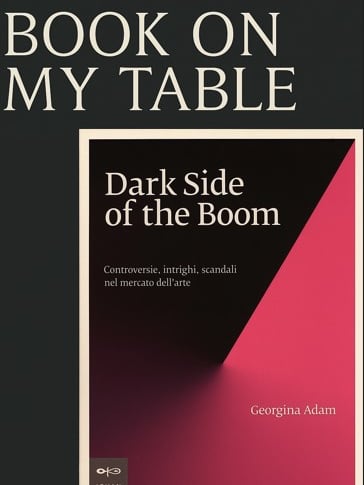THE INVISIBLE ARCHITECTURE OF VALUE
On Georgina Adam’s Dark Side of the Boom. Controversies, intrigues, scandals in the art market
BOOK ON MY TABLE
Charlotte Madeleine CASTELLI
10/17/20253 min read


There is a precise conjunction, captured with glacial lucidity by Georgina Adam in Dark Side of the Boom, in which the art world undergoes a structural metamorphosis from a pulsating cultural ecosystem to a meticulously engineered financial thriller. Between the immaculate walls of freeports and the shadowed corridors of auction houses, the luminous promise of art becomes entangled with the opaque circuitry of capital. Adam, one of the sharpest and most unflinching chroniclers of the global art market, does not limit herself to recounting scandals or excesses: she wields her investigative gaze as a scalpel, performing a dissection of the pathologies that have defined the post-2008 economy of art. Her central thesis is unforgiving, the value of art can never be fully captured by its market price; it exists in the fragile spaces where meaning resists monetisation. Yet it is precisely these spaces that are now under siege.
Adam reconstructs the anatomy of this contagion, a system where connoisseurship has been replaced by speculation, and contemplation by ownership. The artwork becomes a liquid asset, a parallel currency circulating through tax-exempt freeports, offshore accounts, and private vaults where anonymity replaces authorship. Provenance becomes a financial instrument, scarcity an engineered derivative, and opacity the market’s most strategic lever. The speculative boom, accelerated by global demand and a new class of financiers-collectors, has concentrated disproportionate power in the hands of a few “mega actors”: auction houses, blue-chip dealers, and super-collectors capable of dictating prices and trends. Artists are transformed into brands, their studios into production lines designed to meet the voracity of a market that consumes faster than it remembers. Within this dynamic, the line between authenticity and artifice blurs: authenticated forgeries, expertly managed concealments, and high-profile disputes over authorship and copyright expose a system that has sacrificed integrity upon the altar of liquidity and profit.
Yet Adam’s most incisive analysis pierces deeper, into the cultural institutions themselves. “How many times,” she asks implicitly, “does a wall text, a press release, or a museum partnership function, unconsciously, as a certificate of legitimacy, an authentication that inflates value rather than meaning?” This question exposes the intellectual contagion of capital: the subtle absorption of financial logic into curatorial practice. The museum, once a sanctuary of critical autonomy, risks becoming an extension of the market’s rhetoric, a node in the chain of validation. The need for funding, the seduction of glamour, and the hunger for visibility mediate decisions once driven by historiography and critique. Adam frames this as a systemic pathology, one that demands a new ethical metabolism.
Her writing, both surgical and restrained, traces the choreography of dependency that binds the collector to the dealer, the dealer to the curator, the curator to the institution, and the institution to the invisible architecture of the market that sustains (and often devours) them all. Each transaction, each gala dinner, each acquisition becomes a negotiation between value and visibility, truth and performance. Yet Adam resists cynicism: she writes from within the system, not above it, insisting that awareness, not withdrawal, is the first form of resistance. For curators, writers, and cultural producers, Dark Side of the Boom becomes a manual for responsibility: every exhibition must be conceived as an act of resistance against the commodification of aura, every act of interpretation as a reclamation of meaning from the gravitational pull of price. Transparency, in her vision, must not be compliance... it must be care.
Reading Adam as Chief Curator at Future, I perceive her work as an ethical blueprint for re-imagining how platforms of cultural production can position themselves amid the distortions of capital. The art world does not need transparency as spectacle, but transparency as a language of trust, a way to rebuild the connective tissue between artist, institution, and audience. The lucidity of Adam’s inquiry lies in this revelation: to understand the pathology is the first step toward designing a new metabolism, one that restores integrity to circulation and responsibility to visibility.
In the end, Dark Side of the Boom is not about scandal but about structure... about the architecture of belief that sustains value, and the ways in which that belief can be both corrupted and renewed. Adam exposes a world where money moves faster than meaning, yet she also gestures toward the possibility of another order, one where looking regains its autonomy from owning, and where art, stripped of its speculative veneer, returns to its original condition: a mirror of human complexity, fragile, fallible, and still capable of truth.
All rights reserved © Charlotte Madeleine Castelli | Book on My Table
Future Maastricht Museum & Gallery
